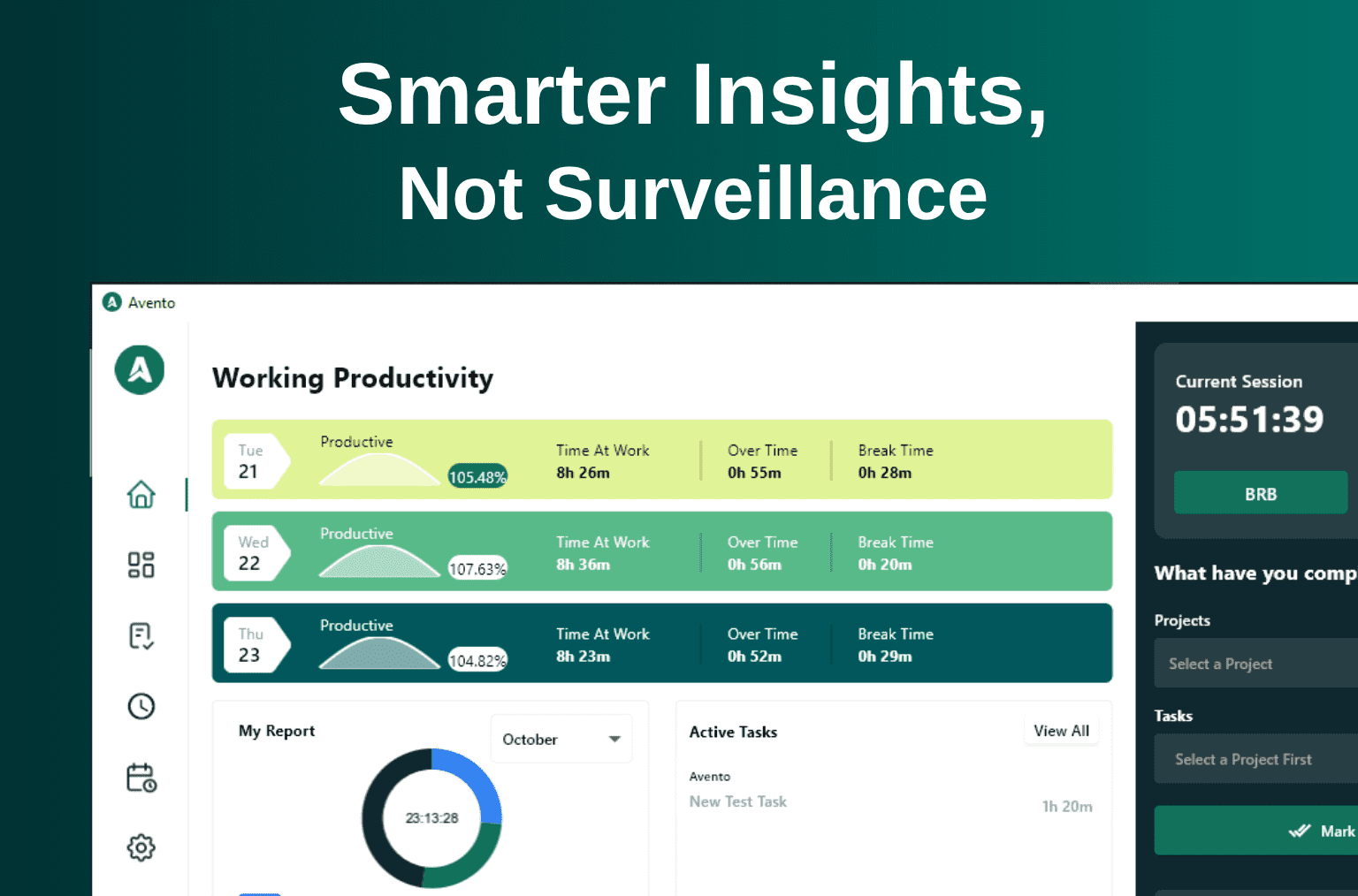Introduction — When Monitoring Turns Into Mistrust
In the race to boost productivity, many companies have turned to employee monitoring tools. On paper, these tools promise visibility and control — tracking activity, screenshots, and time spent on tasks.
But in practice, they often do the opposite of what they claim. Instead of fostering accountability, they create anxiety. Instead of insights, they generate noise. And instead of empowering teams, they erode trust — the very foundation of effective work.
As hybrid and remote work become the new normal, organizations are realizing a hard truth: traditional monitoring tools are outdated for the modern, digital-first workforce.
1. The Flawed Logic of Surveillance-Based Productivity
At their core, most employee monitoring tools operate on a simple assumption — more visibility means more productivity.
But measuring productivity through keystrokes, screenshots, or idle minutes doesn’t tell the whole story. It confuses activity with effectiveness. A busy screen isn’t proof of valuable work, and a short break isn’t proof of disengagement.
Why This Model Fails
- It measures presence, not progress. You can’t quantify creativity, strategy, or problem-solving through mouse movement.
- It penalizes focus. Deep work often looks idle to a monitoring tool.
- It builds fear, not ownership. Employees work to “look active” instead of being engaged.
The result? Artificial productivity metrics — high on data, low on meaning.
2. The Human Cost of Continuous Monitoring
Surveillance-driven systems can damage morale faster than any policy ever could. Employees feel watched, not trusted — which quietly kills engagement.
In 2024, a global HR survey by Gartner found that 63% of remote employees under continuous monitoring reported higher stress levels and lower job satisfaction.
The Hidden Consequences
- Burnout & anxiety: The pressure to appear “always active” leads to mental fatigue.
- Reduced innovation: People avoid experimentation when every action is tracked.
- Erosion of trust: A culture of suspicion replaces a culture of collaboration.
Ultimately, micromanagement at scale doesn’t create better teams — it creates defensive teams.
3. Data Overload Without Context
Traditional monitoring tools are great at collecting data — but terrible at explaining it. Managers end up with endless charts and activity logs that reveal very little about why performance fluctuates or how to improve it.
Without context, data becomes noise.
What Managers Actually Need
- Clarity, not clutter
- Actionable insights, not endless screenshots
- Patterns of improvement, not punishment
What’s missing isn’t data — it’s intelligence.
4. The Future of Workforce Analytics is AI-Powered and Privacy-First
AI is transforming how organizations understand work. The next generation of workforce analytics tools don’t spy — they analyze, interpret, and recommend.
Instead of tracking every click, they focus on outcomes and context — turning behavioral signals into actionable insights that help both managers and employees grow.
How AI Changes the Game
- Insight over intrusion: AI identifies productivity trends without recording every detail.
- Coaching over control: Instead of punishing inactivity, it recommends ways to optimize workflows.
- Transparency over tension: Employees see the same insights managers do, creating shared accountability.
This is not about replacing humans with algorithms — it’s about amplifying human potential through intelligent systems.
5. Why Avento.ai Represents This New Era
Built by Glixen Technologies, Avento.ai embodies this shift toward humane, intelligent analytics. It’s not another monitoring app — it’s an AI-powered platform for team performance and collaboration.
Avento.ai focuses on clarity, alignment, and growth — not surveillance. It captures essential signals like time-on-task, task lifecycle, and employee summaries, then uses AI to turn that into meaningful insights that guide improvement.
Why Teams Choose Avento.ai
- Boost efficiency without micromanagement
- Enhance collaboration through shared visibility
- Support well-being with privacy-first defaults
- Simplify HR and payroll with integrated workflows
With Avento.ai, companies move from tracking time to understanding performance.
6. From Monitoring to Empowerment — A Better Path Forward
The best organizations are realizing that trust and transparency outperform surveillance.
AI-powered workforce analytics like Avento.ai prove that visibility doesn’t have to come at the cost of dignity.
When employees feel supported, not watched, performance improves naturally — and so does retention, morale, and long-term growth.
The Future of Work Is Clear
- Respect data privacy
- Replace monitoring with meaning
- Use AI to empower, not enforce
Conclusion — Intelligence Over Interference
The problem with employee monitoring tools isn’t technology — it’s philosophy. They were built for control, not collaboration.
But the future belongs to intelligent systems that combine data with empathy, analytics with context, and structure with trust.
Avento.ai stands at the heart of that future — helping teams work smarter, not under surveillance.
Experience the future of workforce analytics.
👉 Start Your Free 3 Months Trial At Avento.ai






